General recommendations
We can talk about the sequence of repairs in an apartment for a long time, but the main recommendations fit into a short list:
- Always start with the most remote non-walk-through rooms – the bedroom, the nursery.
- Move towards the exit, the living room is the penultimate one to be repaired. Leave the hallway for last, so as not to damage the finish with construction debris from other rooms.
- Follow the order of finishing surfaces during cosmetic repairs: always move from top to bottom. First the ceiling, then the walls and floor.
- Draw a detailed design of the future room with the location of furniture, electrical wiring, pipes. This will help you avoid mistakes with the location of sockets and switches, and the installation of plumbing.
- When planning a redevelopment, make sure that your actions are legal and check in advance – are you going to demolish a load-bearing wall?
Where to start the renovation?
The correct sequence of work during renovation begins long before the final and even rough finishing. The initial stage of renovation should always be drawing up a plan, only then can you move on to active actions.
- Discuss your wishes with your family. The renovation of the apartment will affect all its residents, so everyone should be sure that they will be comfortable in the house after all the work is completed.
- Think over the layout. Do you need all the existing partitions, do you need to make new ones and divide, for example, the nursery into two parts? Or zone the hall?
- Decide on the design. Although finishing is at the end of the apartment renovation sequence, it is necessary to decide what kind of finishing will be needed before dismantling. To create a design project on your own, we recommend that you first create a mood board and draw a diagram of the apartment. This will make it easier for you to understand exactly what the ceiling and walls, floor, interior doors, and furniture will look like.
- Make a work plan and budget. An important stage of renovation, on which the success of the future project depends. Be sure to set aside 10-20% for emergencies and changes in prices for building materials. It is easy to calculate the main cost pool, knowing the volume of the apartment, the expected materials, and other details.
- Find workers. You can do the renovation of the apartment yourself or entrust it to specialists. If you are going to hire a team, make sure of their level of abilities in advance. It is advisable to read reviews, but it is best to use the recommendation of friends. Also study what questions you should ask the construction team before the renovation.
- Pack things and furniture. The renovation process involves a lot of debris and dust, especially if you have to dismantle old coverings, redevelop and do other large-scale work. During a major renovation, we recommend temporarily removing things and furniture from the apartment; during a cosmetic renovation, it is enough to protect them with a special film.
The order of actions during a major renovation
The sequence of renovations in an apartment is largely determined by the preparatory work: what exactly needs to be dismantled, whether it is necessary to change communications, interior doors and windows. If the housing is in a deplorable state, ordinary wall finishing will not be enough.
Dismantling unnecessary structures and old coverings
Apartment renovation always begins with destruction: removing unnecessary partitions, removing old material from the ceiling, walls, floor, dismantling plumbing fixtures and pipes. All that’s left is to take the trash out of the apartment and step #1 can be considered complete.
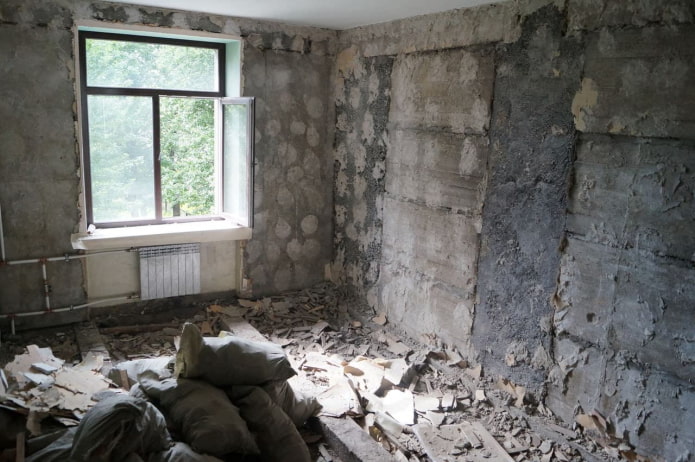
Repair and installation of utilities
The durability of the bathroom and kitchen finish directly depends on the quality of the plumbing. Keep in mind that if you suddenly have a leak after finishing work, you will have to do the repairs again.
Check the pipes: if they are still in good condition, they can be left. The old ones will have to be completely replaced. Often, a new project requires a different layout, plumbing is sewn into boxes — these stages are also being carried out at the moment.
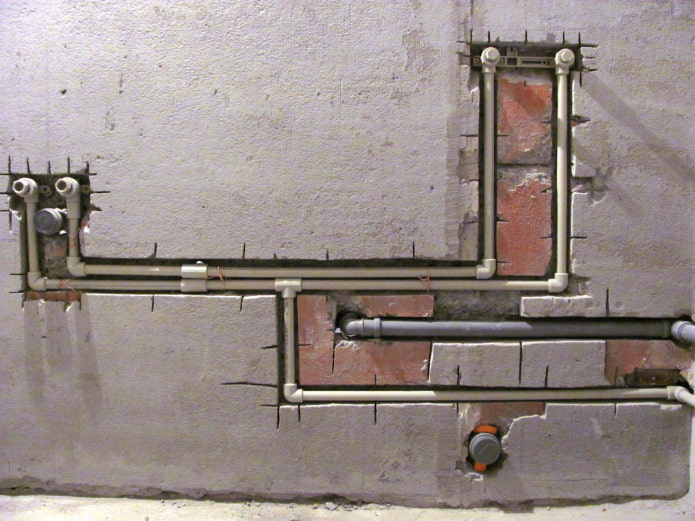
Construction of new structures
The next step in the sequence of major repairs in the apartment is the installation of the necessary partitions made of plasterboard or brick. This stage is necessary when redeveloping or renovating an open space. The area should be divided into rooms and the location of all the walls should be determined at the design stage.
Electrical work
After installing the partitions, it is the turn of the electrical wiring. Now is the time to use the outlined plan and hide unnecessary sockets, place new ones in the right places, move switches.
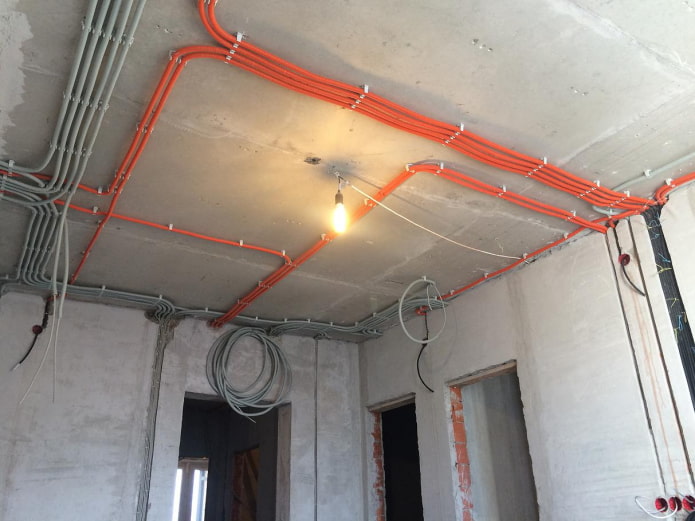
Important! In the walls for wiring, grooves are made, in the ceiling, the wiring is also either hidden (without grooves!), or, if there is a suspended ceiling, laid superficially.
Replacing windows and entrance doors
Replacing the entrance door and improving the doorways is done before any actions with surfaces. The old frames should have been removed at the first stage, all you have to do is install the new ones.
But don’t rush to fix the frames and the panels themselves – to avoid damage, it is better to postpone their installation until the end of the finishing. The exception is the front door, it is installed immediately together with the slopes and threshold, but the inner surface can be pasted over with a film to protect it from damage.
Windows are replaced completely, immediately changing the window sills and ennobling the slopes.
Advice! If you do not want to damage the glass and the window sill, do not remove the film from them until the end of the finishing.
Aligning the surfaces
In the sequence of repairs in the apartment, alignment is somewhere between the preparatory and finishing processes. The quality of laying the floor covering, wallpapering or painting the walls, and finishing the ceiling depends on how well the walls, ceiling, and floor are leveled.
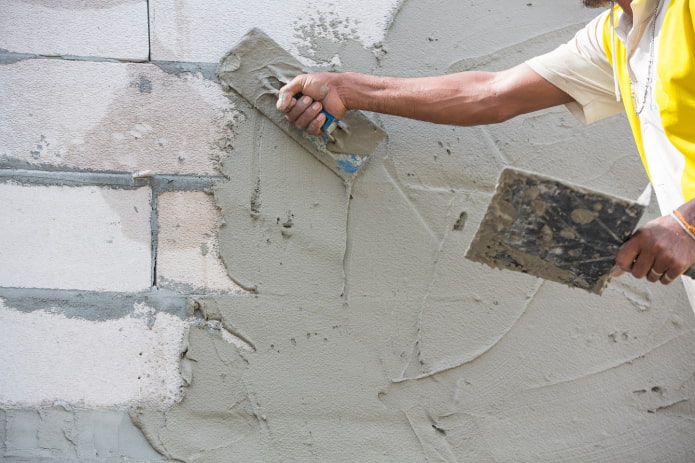
Important! In rooms where underfloor heating is planned, it is sewn into the screed or done immediately after it (depending on the type of construction).
Installation of plumbing and heating systems
There are no ironclad building rules regarding the installation of plumbing – some people prefer to do the finishing in the bathroom after the installation of the main elements, while others postpone the installation of the bathtub and toilet until a later time. In any case, built-in plumbing, taps and pipes should be placed before plastering, tiling, etc.
Radiators, boilers and other heating elements are also placed at this stage.
Finished work
The finish line in working with building materials! The sequence of works in a separate room involves moving from top to bottom – first they paint or install a suspended ceiling, then they plaster, paint or wallpaper the walls, and finally they lay the flooring.
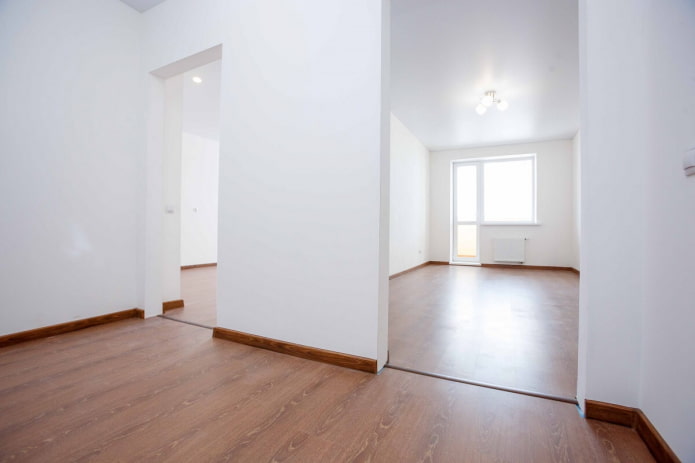
Important! All materials should be left to rest in the apartment for 24-72 hours before installation, especially linoleum, parquet, laminate.
Installing built-in furniture and appliances
After finishing work, let everything dry completely (24-36 hours) and proceed to installing furniture and appliances. At this stage, sliding wardrobes, kitchen units, bathroom furniture and other stationary items are installed.
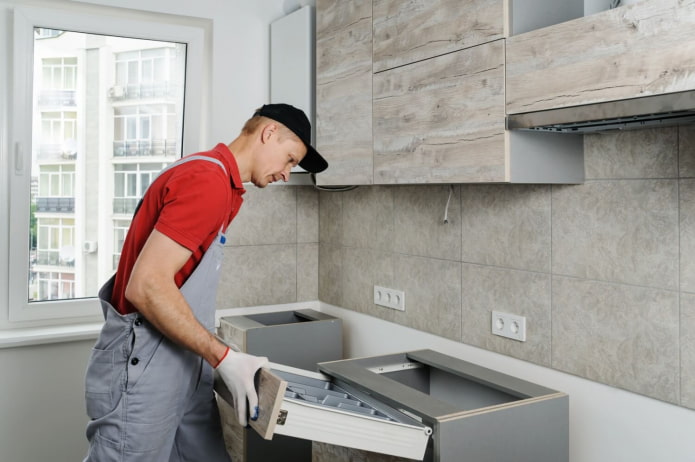
Installation of interior doors
It’s time to put the door panels and trim back in place. We talked about why it was not worth installing them right away in the section “Replacing windows and entrance doors”.
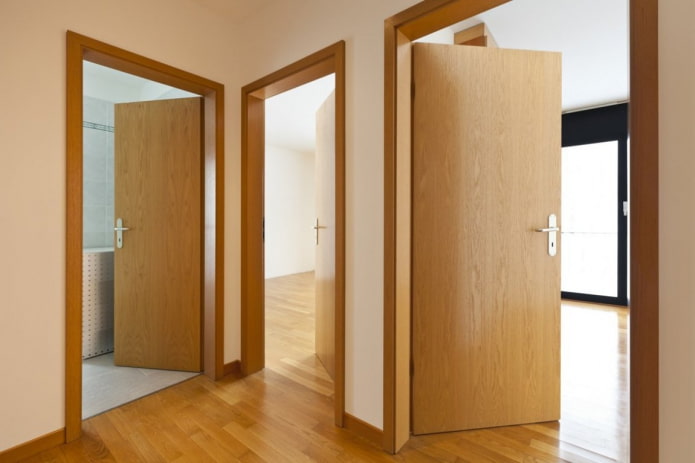
Installation of lighting fixtures and sockets
The correct sequence of repairs in the apartment assumes that the wires for all future electrics have already been brought out – you only need to connect the contacts and put the sockets, switches, chandeliers, sconces and other parts in place.
Finishing with decorative elements
At the final stage, you need to finish the remaining small details: install floor skirting boards, ceiling moldings, curtain rails and other elements that require your attention.
Stages of cosmetic repairs
The order of finishing during cosmetic repairs does not involve complete destruction and is limited to the most necessary actions.
Preparation of the premises
We discussed all the preparatory stages in the previous section – start with what is relevant for you and move step by step.
Removal electrical appliances
To avoid any interference with dismantling old materials and applying new ones, remove sockets (at least covers), switches, remove ceiling and wall lamps.
Important! Do not leave bare wires, be sure to route them and insulate them with tape.
Removing old coatings
Remove wallpaper, tiles, panels, paint from the walls down to the plaster. The following steps are performed only on bare walls.
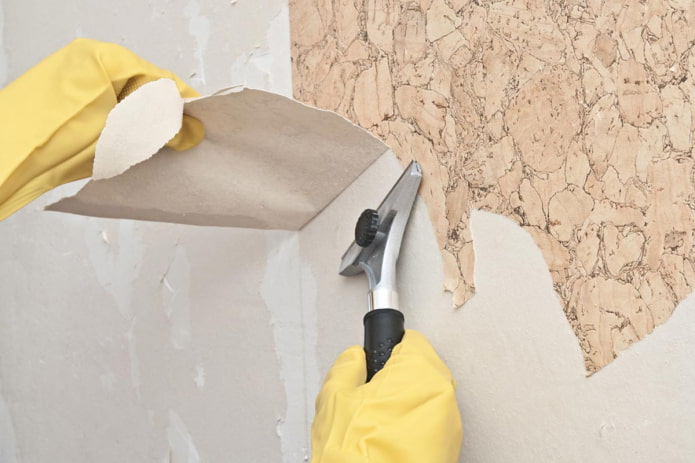
The ceiling should be cleaned of old paint or whitewash – most often unstable water-based compositions are used for it, which will simply roll off when a new layer is applied.
The old floor is also dismantled, the only exception can be tiles or boards – provided that they are reliable and have a suitable subsequent coating.
Adjusting old surfaces
Even walls that have already been puttied will have to be leveled (with the exception of previously well-prepared walls for painting – they can be safely repainted again). Standard rough stages: primer, plaster, putty, finishing putty, primer. However, it all depends on the coating that you plan to apply in the future.
Final finishing
Decorative coatings are easy and pleasant to apply if you have not skipped and have completed all the previous stages with high quality. Start with painting the ceiling, then repair the walls and floor.
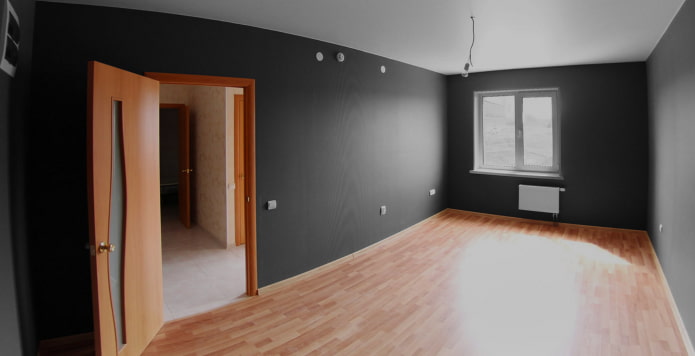
Do not skip stages and pay due attention to each of them – then your renovation in the apartment will last for more than one year and will please you throughout the entire time.
Now reading:
- Choosing Curtains for a Children’s Room: Tips for Boys and Girls (79 Photos)
- Wall decor in the nursery: 80 photos and modern solutions for boys and girls.
- Types of ceilings: more than 60 photos, design ideas for apartments, comparison table.
- How to Build a Porch Canopy? 39 Photos and Step-by-Step Guide.
- 10 Impressive Options for Decorating Walls with Brick in the Interior